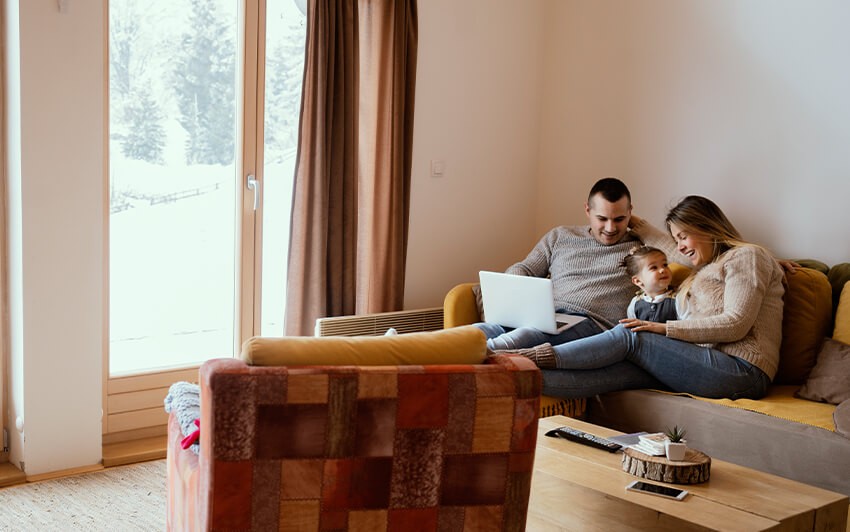
Do you Need a Humidifier?
The winter months north of 35° longitude can get pretty cold. Cold air means dry air. And that dry air invades your home every time someone opens a door. It also gets in through windows, outlets, and any other little cracks in your building envelope. This is true for both old homes and new construction alike. Dry air in the home leads to dry skin, cracked lips, nosebleeds, cold and allergy-like symptoms, and even cracking of the wooden furniture and flooring of your home. Humidity in the home during cold and dry months increases air quality and comfort, but how do you know if you really do need a humidifier in your home?
How Humid Should it Be?
The ideal relative humidity in the home is between 30 and 50%. This makes for the most comfortable living conditions and air quality. Anything less can make skin feel uncomfortably dry and leave throats sore among other things. However, anything above 50% humidity will promote bacteria and mold in the home.
Some smart thermostats can read the relative humidity of the home and are a great way to save money while ensuring a comfortable home environment. You can also measure relative indoor air humidity with a hygrometer easily found at the local hardware store.
Do I Need a Humidifier?
There are a couple things that can indicate whether or not you actually and absolutely need a humidifier. First off, warm air can hold more humidity than cold air can, so the drier your air, the less heat it will hold. If your furnace is running near constantly in the cold months, it could be that your air is too dry. Cracking of wood floors and furniture would be another indication, as would cold-like symptoms when you are at home. Excessively dry skin, cracked lips, and even nosebleeds can all be indications of a house that could benefit from some extra humidity. However, before having something installed, check the relative humidity of the home using a hygrometer first.
Types of Humidifiers
-
Central humidifiers that are built into the forced air system. These supply humidity through the ductwork to the whole house. These are attached near the furnace in the mechanical room and are the most expensive option.
-
Plug-in humidifiers are the least expensive option but only work in the room that they are plugged into. These are the ones that mom used to use when you had a cold. They either create hot steam (which can be dangerous for children) or cooled water vapor. These are ideal in situations where the house is only a couple of percentage points lower than the ideal indoor humidity. They can also come in the form of diffusers used with essential oils.
Cleanliness and Caution
Humidifiers are an ideal breeding ground for bacteria and mold. Whether you choose a system to humidify your entire home or just an in-room humidifier, remember to keep the reservoirs and operational parts clean. Buildup of moisture in these parts can breed mold and it is just as unhealthy to those suffering asthma and allergies as dry air can be.
The decision to get a humidifier for the home is a personal choice that should be made based on how dry you feel during the dry seasons and how humid your house actually is. Remember to test this using a hygrometer. Anything 30 to 50% humidity is perfectly fine, although if you are feeling a little dry or you are only a couple of points below, a room humidifier will help.
If the wood in the house and your skin and lips are cracking, or the hygrometer says that you are anything less than 20% humidity, it could be time to consider a whole-home system. Consult your local heating and cooling professionals for help.
